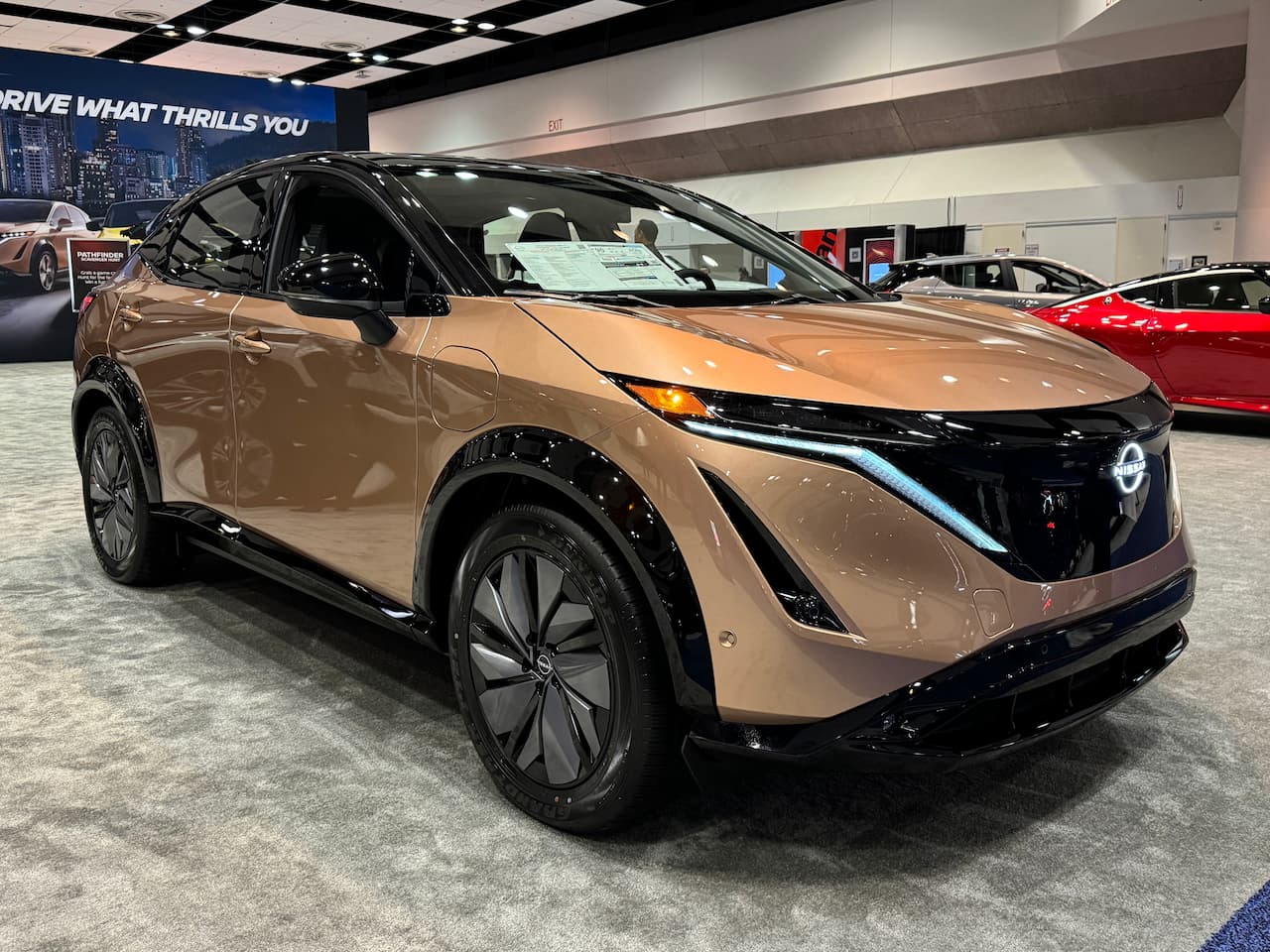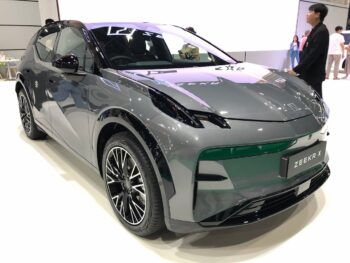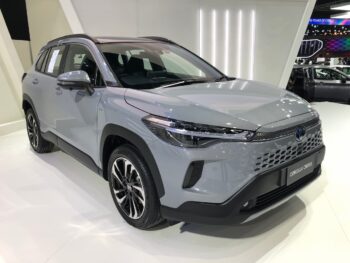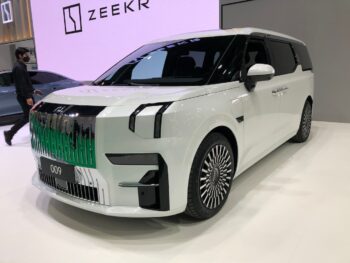The Nissan Ariya is the brand’s first pure-electric SUV and competes with some of America’s most high-tech mainstream EVs, such as the Tesla Model Y, VW ID.4, Hyundai Ioniq 5, Chevrolet Blazer EV, and the Kia EV6. Recently, I got a chance to see it again in the range-topping Platinum+ e-4orce configuration. Here is my experience with the Japanese electric SUV:
Design
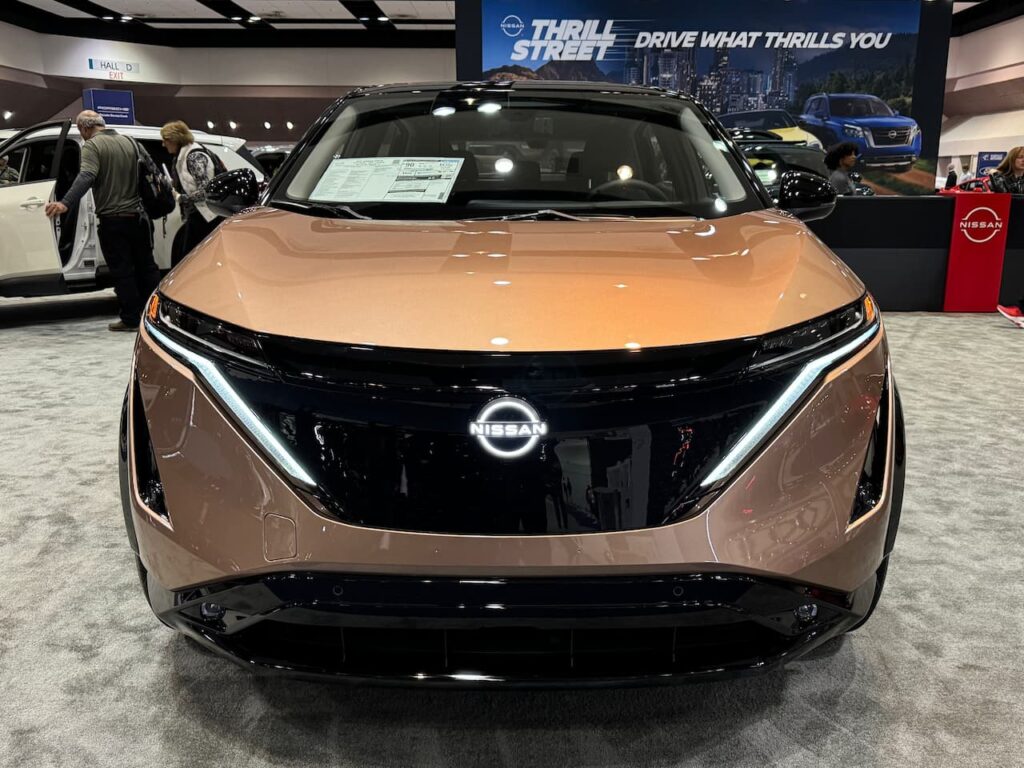
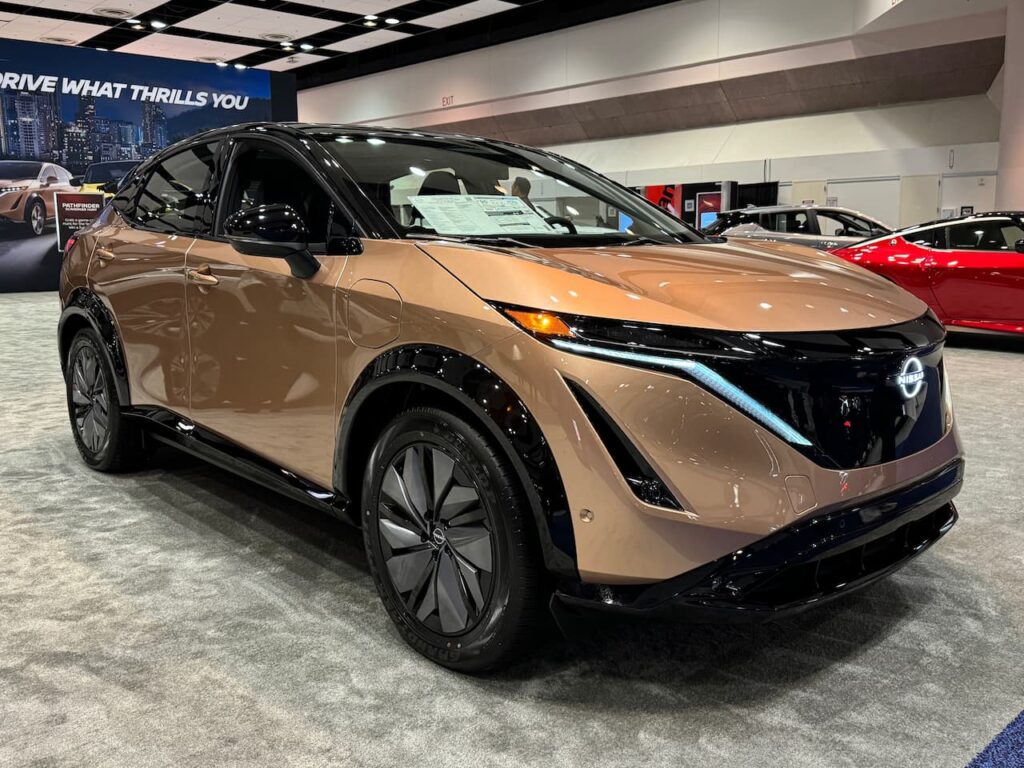
I think the Nissan Ariya has a dynamic and sophisticated exterior that emphasizes equally on sportiness and style. If you were to ask me, it is hands-down the best-looking crossover from every angle in its segment.
I like the Ariya’s low and wide stance, the slim headlamps, the raked C-pillar, and the one-piece light blade. Details like the subtly illuminated brand logo and the artwork inspired by the Japanese Kumiko style of woodwork under the translucent smooth surface between the headlamps give it a futuristic and classy impression.
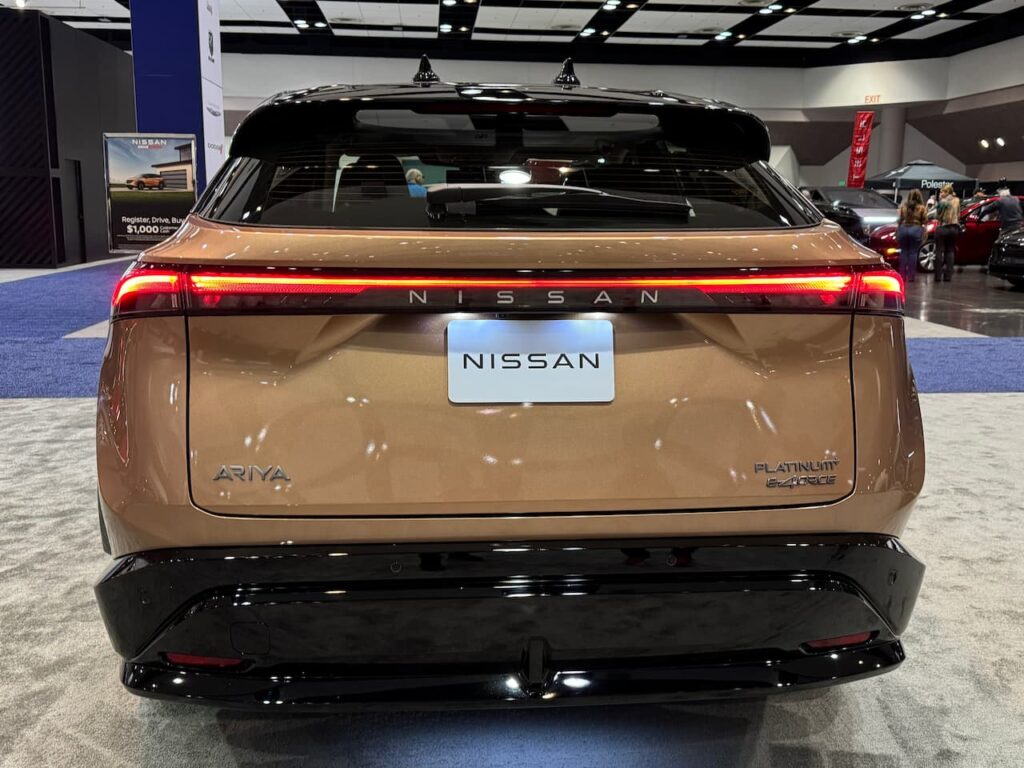
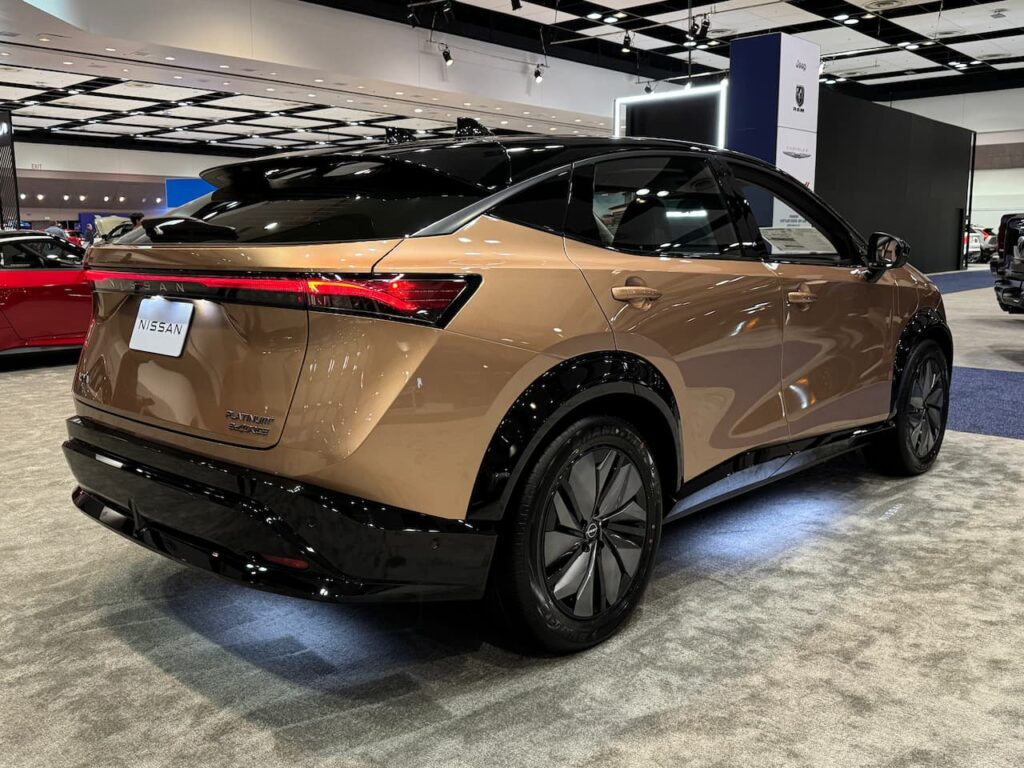
Made in Japan, the Ariya has an excellent build quality. As an SUV from a mainstream brand, it doesn’t have ultra-tight panel gaps, but I noticed that the gaps and alignment were consistent throughout the body. The unit I experienced, finished in Sunrise Copper/Black Diamond Pearl two-tone paint, looked stunning under the lights. Nissan designers have put significant effort into giving the Ariya a sci-fi and aerodynamic look. However, I feel it missed an opportunity with one feature – the door handles. Flush-fitted door handles would have been the perfect finishing touch to its futuristic design.
Interior
The Nissan Ariya features a lounge-like, low-profile interior that stresses on minimalism and spaciousness. The Platinum e-4orce unit that I sat in was sumptuous, with Blue Gray upholstery, copper accents, and black Kumiko pattern decor elements. The wooden center dash surface further elevated the luxury feel, making the interior particularly impressive.
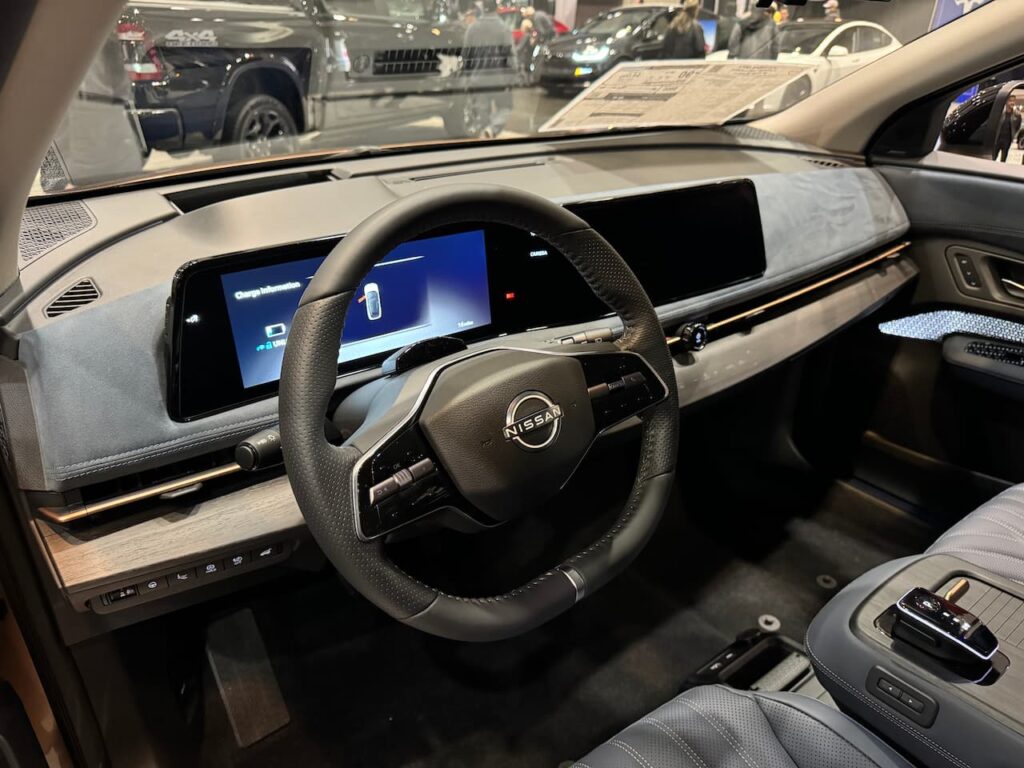

Perched in the 8-way power driver’s seat, with 4-way power lumbar support, heating, cooling, and memory, I noted the cabin floor was flat, without the typical central tunnel bump found in many vehicles. I was able to slide the center console back and forth electrically. There was so much empty space ahead of the center console that I could easily carry a cement bag there or even hop into the 8-way power front passenger seat with heating, cooling, and memory from the inside.
My favorite feature of the Ariya’s interior is a power center storage with a tray table. I can command the storage box and tray table tucked under the center of the dashboard to slide out at the touch of a button. I felt it was quite sturdy, so I wouldn’t mind placing an iPad on it to do a quick video call or putting my takeout meal on it.
The downside of the Ariya is its reliance on touch-control switches with haptic feedback for climate control functions, and I believe conventional buttons and switches would’ve been more convenient. Compounding this issue, these controls are not located on a separate panel. Instead, Nissan has integrated them into the wooden center dash surface. This design choice could make the controls difficult to locate while driving, potentially leading to added distraction.
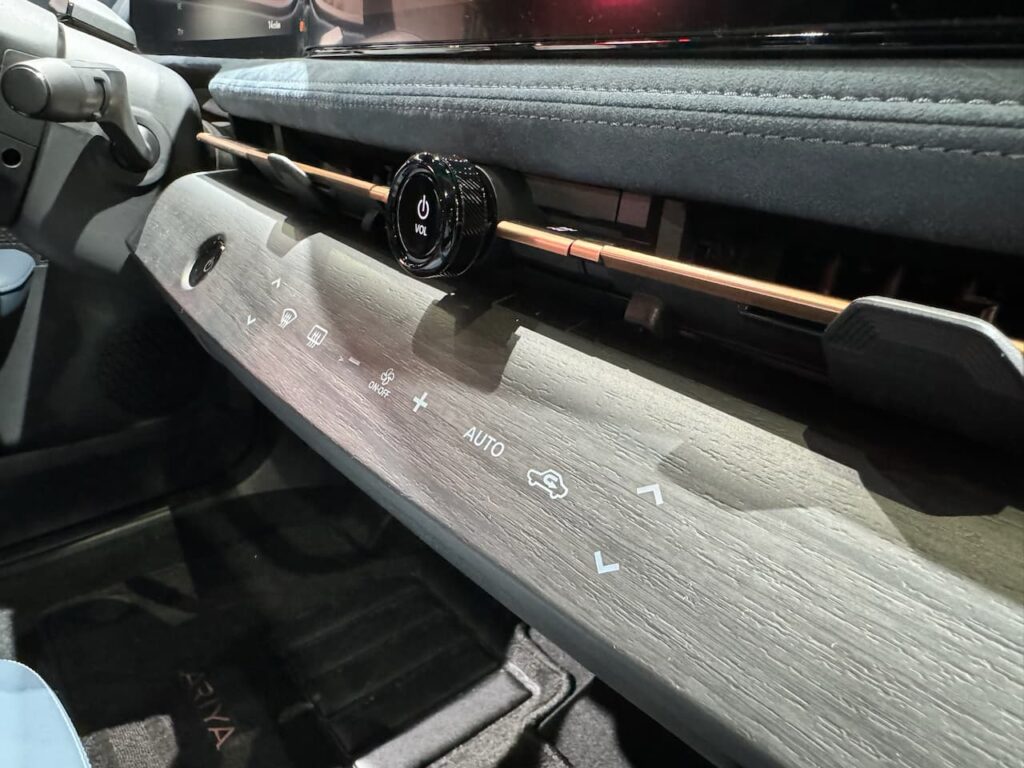
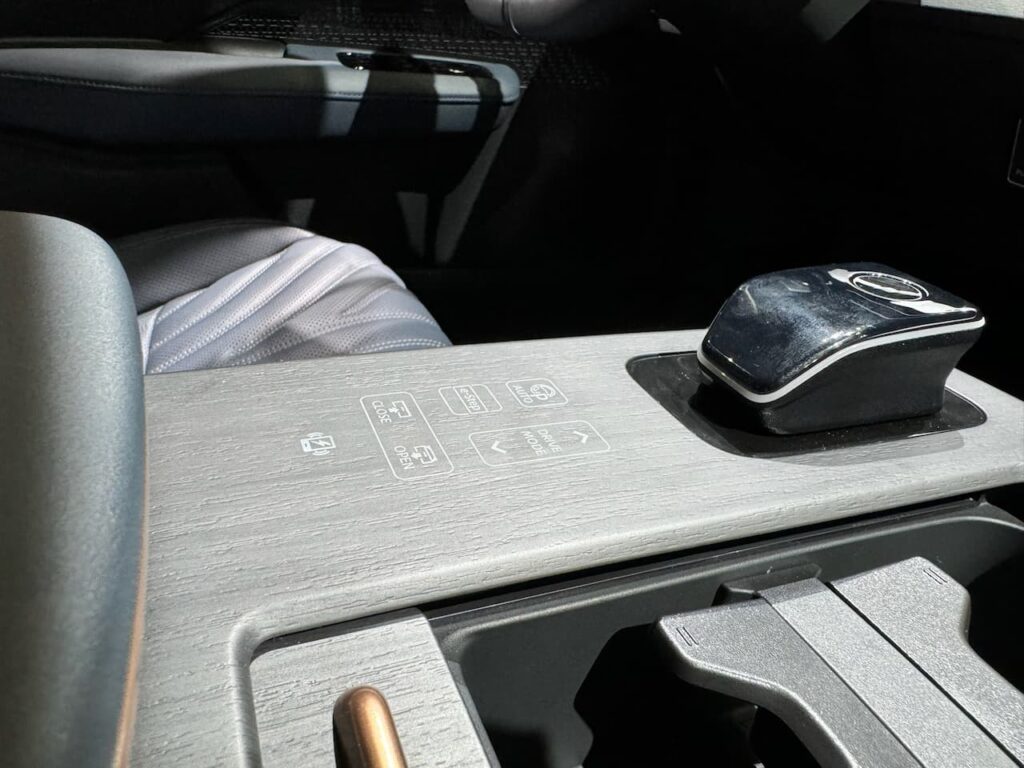
Nissan has also used touch-control buttons for drive mode selection, e-Pedal activation, and the operation of the power center storage with tray table open/close functions. I noticed these buttons are positioned right in front of the armrest. This placement raises two concerns for me: the challenge of locating and pressing the correct button without taking my eyes off the road and the risk of accidentally activating one of these functions simply by resting a hand in the area.
The Ariya’s storage box below the armrest felt impractical, as it’s not deep, wide, or long. I think I could barely put a small tablet in it. Speaking of electronics, Nissan equips it with a 12.3-inch digital instrument cluster and a 12.3-inch touchscreen infotainment system.
From my earlier experience, I can say that the UI of the software Nissan uses in the Ariya doesn’t have a wow factor and looks somewhat outdated. I observed that the animations in the infotainment system weren’t always smooth. Moreover, I felt that its menu structure was also a little difficult to comprehend at first. While it supported wireless Apple CarPlay, its Android Auto compatibility was limited to the wired version.
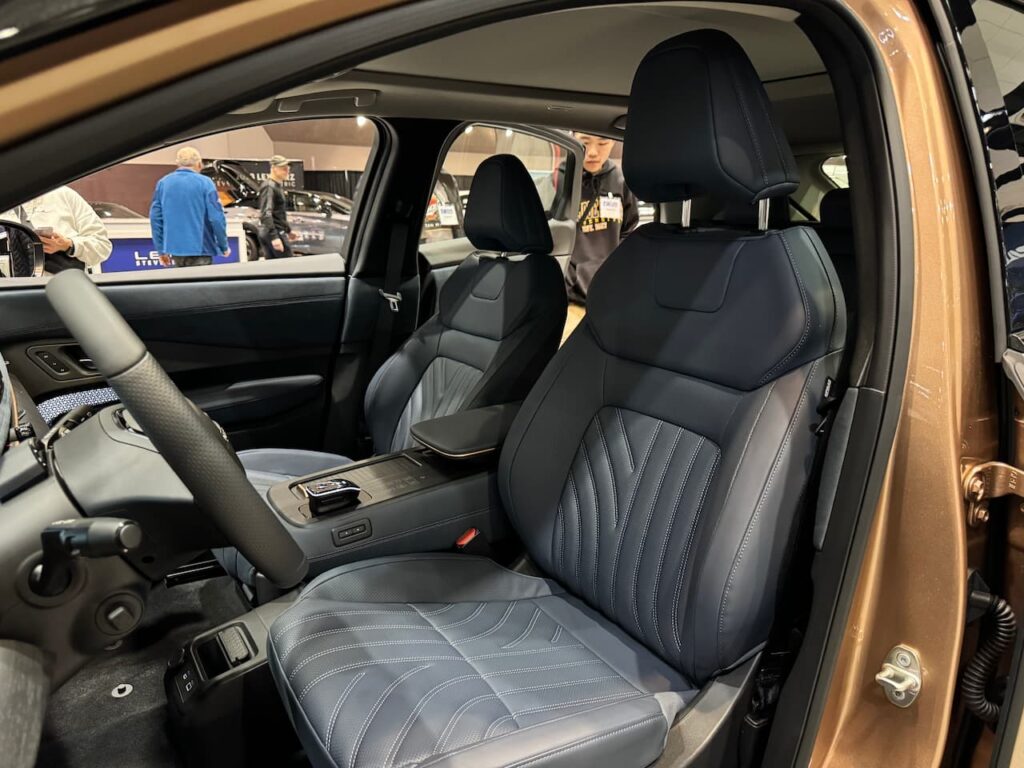
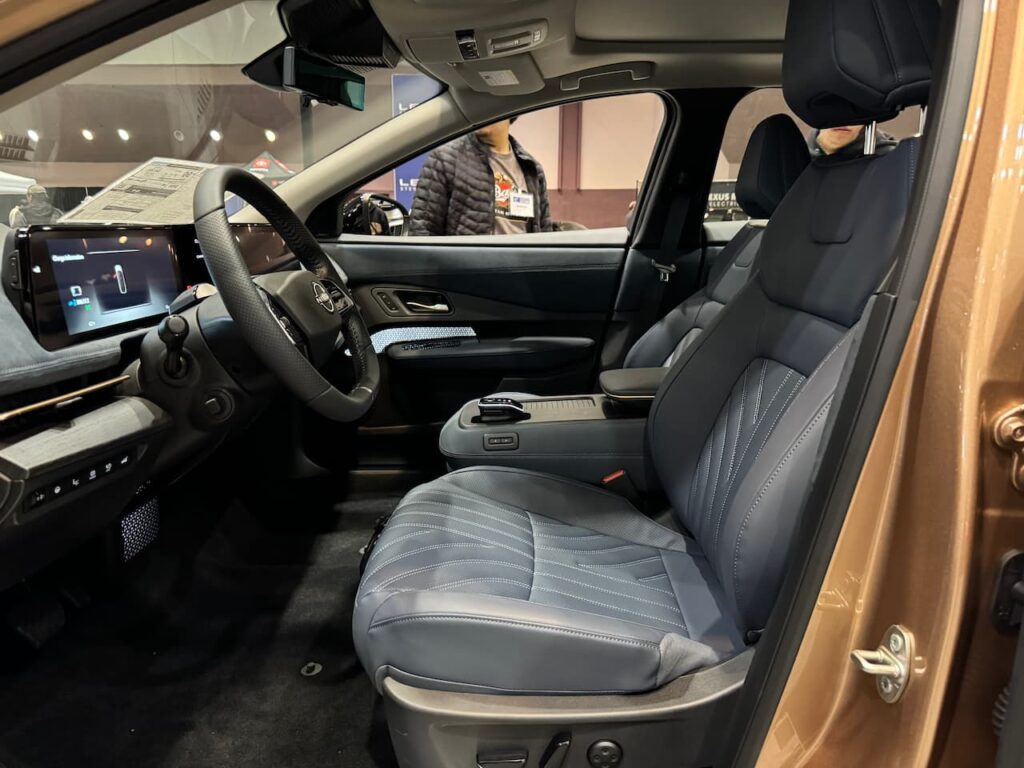
As a six-foot-tall person, I found ingress and egress in the front of Ariya’s cabin quite easy. I liked the driving position, which was a little more upright and commanding compared to the Kia EV6. The heated, two-spoke steering wheel felt comfortable to hold and offered a decent adjustment range with its manual tilt and telescopic column. I had ample legroom and headroom, and I felt that the under-thigh support and lumbar support were impressive as well.
In the back, too, I didn’t face any issues with ingress or egress, but I had to be more careful because of the sloping roofline. For the same reason, headroom was also a little tight, and I think taller passengers (over 6 feet tall) may find their heads touching the roof. I had decent under-thigh support, while the legroom and knee room were impressive. The 60:40 split bench seat was pretty wide and reclinable, and it featured a heating function in the outboard position.
Opening the power liftgate of Ariya, I noted that its cargo area was quite small (22.8 cu. ft.) for the car’s size, and I thought that vertically stacking suitcases could be a problem here. Folding the rear bench seat increases the cargo volume to a practical 59.7 cu. ft., though. Nissan equips the Ariya with a repair kit, not a spare wheel.
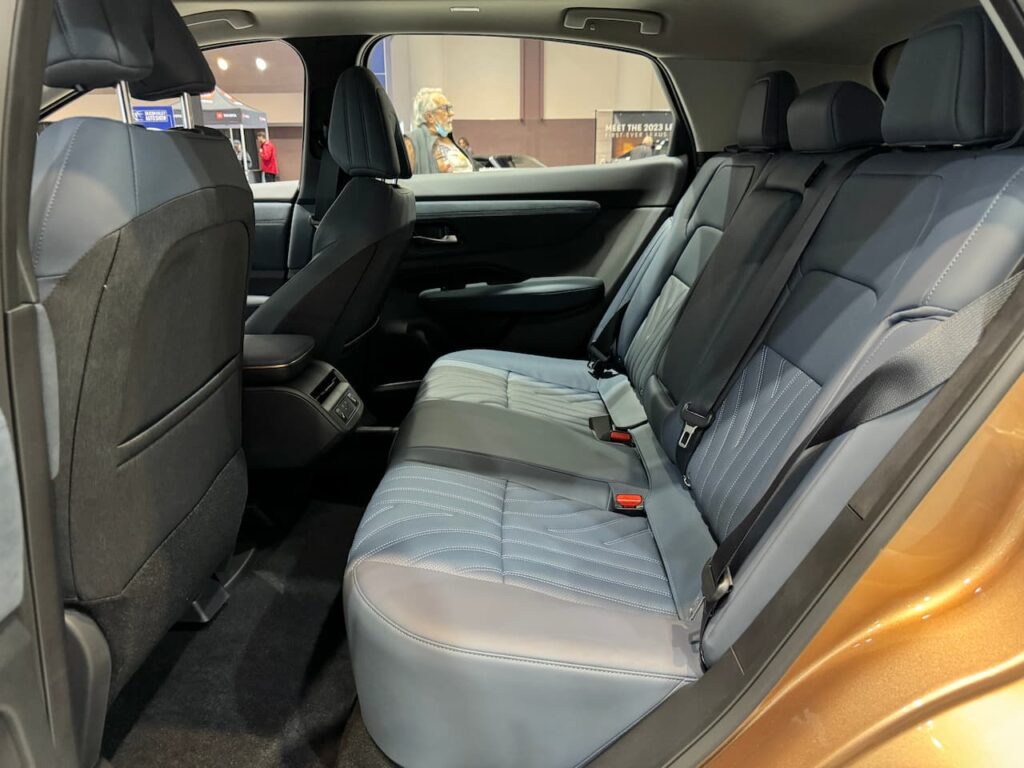
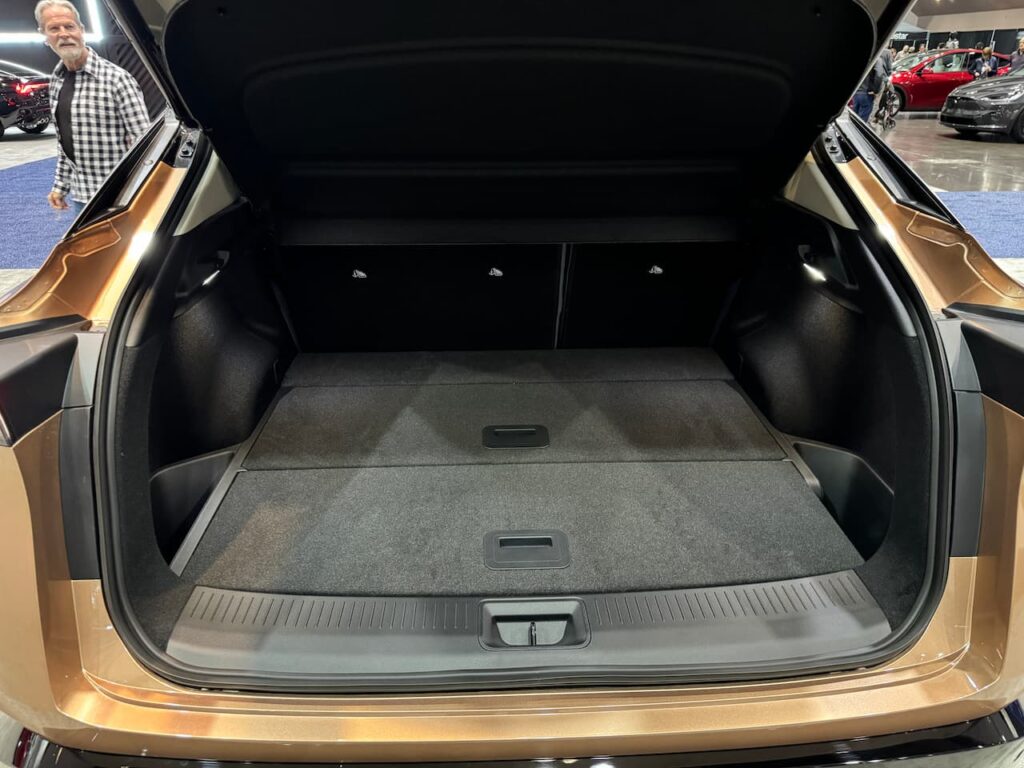
Driving impressions
Nissan offers the Ariya in the U.S. in 238 hp/221 lb.-ft. and 214 hp/221 lb.-ft. FWD variants and 335 hp/413 lb.-ft. and 389 hp/442 lb.-ft. AWD variants. The FWD variants can accelerate from 0 to 60 mph in as little as 7.1 seconds, with an EPA-est. range of up to 304 miles. The AWD variants can do 0-60 in as quickly as 4.8 seconds and travel up to 272 miles on a full charge. Both variants can be configured with 63 kWh or 87 kWh battery, depending on the range needs.
Despite what the specifications suggest, reviews from the earlier model year indicate that the driving experience isn’t as thrilling. It doesn’t feel as quick as its numbers would lead you to believe, and there’s a noticeable body roll. The steering wheel feels somewhat numb and light, which doesn’t inspire much confidence. However, the EV’s all-wheel drive system is impressively tuned, providing stability when cornering on wet roads.
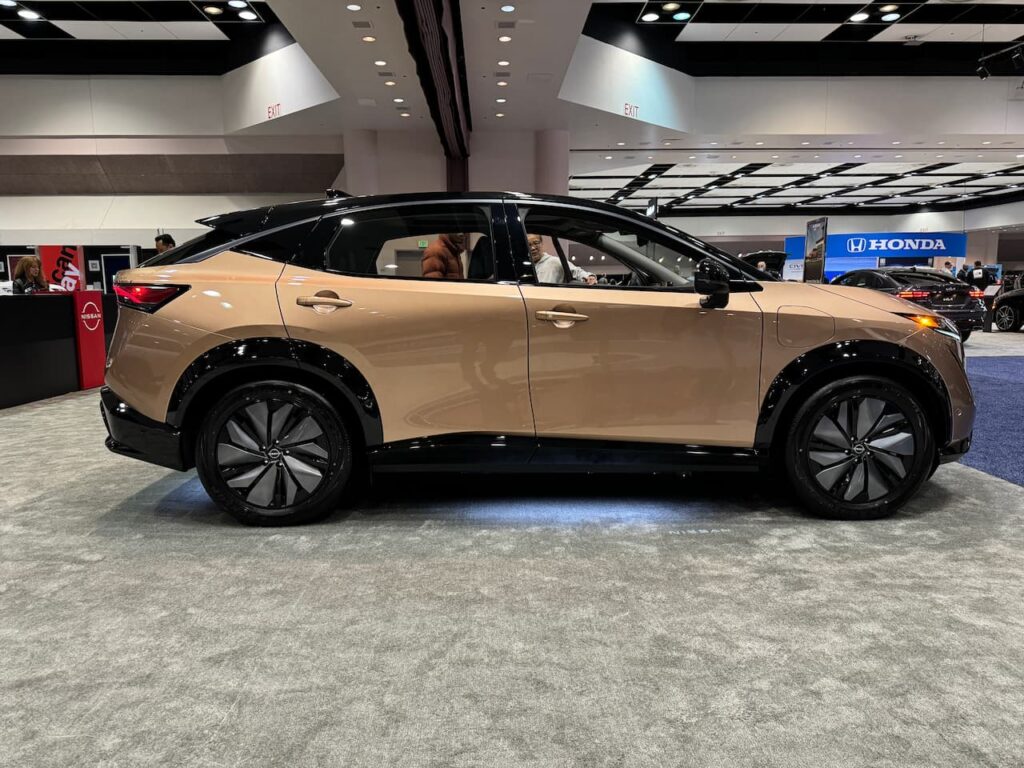
What I can surmise is that Nissan has set up the Ariya for a calm and comfortable ride. The cabin remains quiet, as barely any tire or wind noise finds its way in, even at high speeds. The ride quality is also impressive, as the suspension soaks road imperfections quite well, and it doesn’t get too soft to a level where the occupants feel the ride is too floaty.
Price
The Nissan Ariya’s prices start at USD 43,190 and go up to USD 60,190 (excl. destination and handling fees).
TopElectricSUV says
The Nissan Ariya flaunts a head-turning exterior and a premium interior, excelling in comfort and ride quality. However, the driving experience doesn’t quite match the excitement promised by its specifications. The absence of physical controls complicates access to core functions, posing challenges in the early stages of ownership. Over time, the company will need to lower prices to make it more competitive against the VW ID.4, and that looks to be achievable through localization in North America.
Nissan Ariya FAQs
What is Nissan Ariya price?
The Nissan Ariya’s prices range from USD 43,190 to USD 60,190 (excl. destination and handling fees).
Which models are Nissan Ariya rivals?
The Nissan Ariya competes with the VW ID.4, Toyota bZ4X, Subaru Solterra, Kia EV6, and Hyundai Ioniq 5.
What is the Nissan Ariya range?
The Nissan Ariya can travel up to 304 miles on a full charge.
An automobile engineer by training, I’ve analyzed the global car market since 2005, with a keen focus on EVs since 2008. My journey in online automotive publishing spans 16 years, during which I have reviewed cutting-edge automotive technologies and interviewed leading CEOs and vehicle developers from around the world.
